All archive searching starts by selecting SEARCH THE ARCHIVE from the Home page.
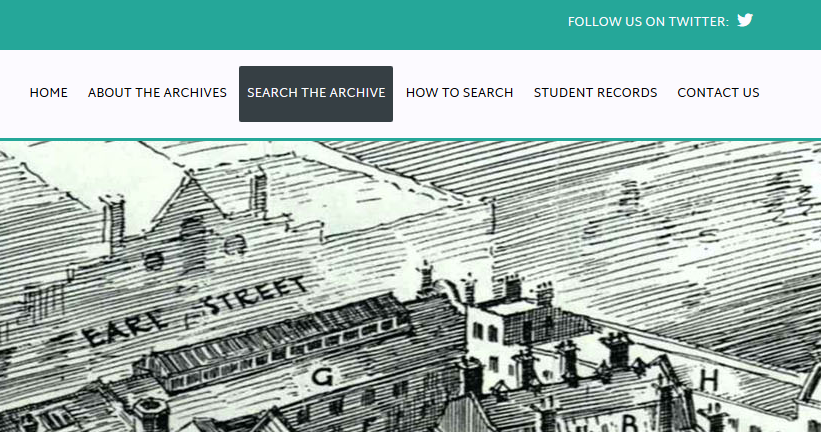
This takes you to the landing page of the LSBU Archive Catalogue.
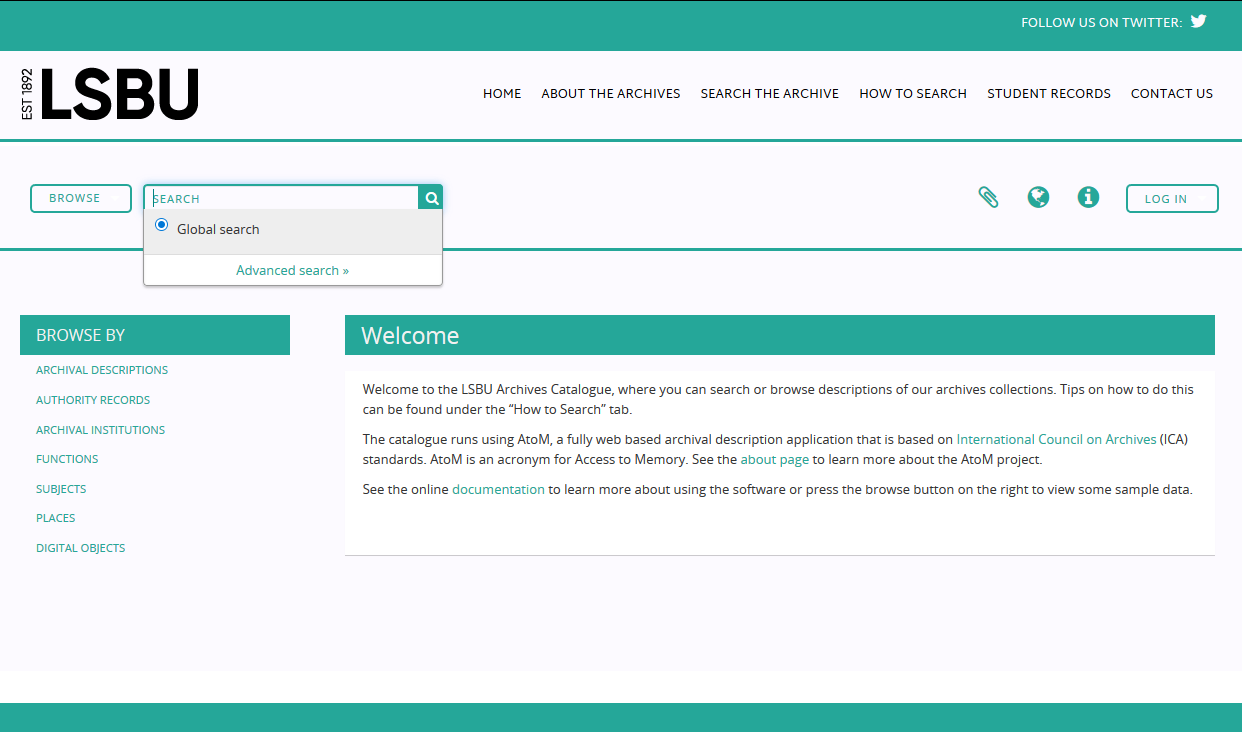
There is a search bar toward the upper left of the screen. Doing a search from here will perform a Global search, meaning that all the collections in the catalogue will be searched. Below the search bar Advanced search can be selected – this is explained later.
Let us say we wish to search for Staff Records.

Search terms entered into the search box are, by default, searched with an AND operator – this means that the search will return all items in the catalogue that contain the text Staff AND Records. The two words need not necessarily be next to one another, they might be on separate lines or in different paragraphs in the item and the item would still be returned in the search results.
If you want to limit the result to items that just have the words Staff and Records next to each other then you must surround your search string with inverted commas thus:

We can now use the Browse button to the left of the search bar to browse to the Archival Descriptions page.
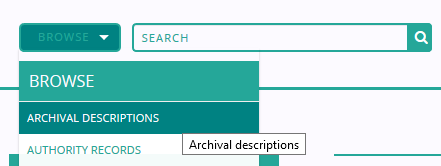
On the Archival Descriptions page, the top-level Archival descriptions are listed. There is another search bar to the top left of the screen. Searching from here is identical to searching from the landing page of the Archive Catalogue – you will perform a Global search of all the collections.
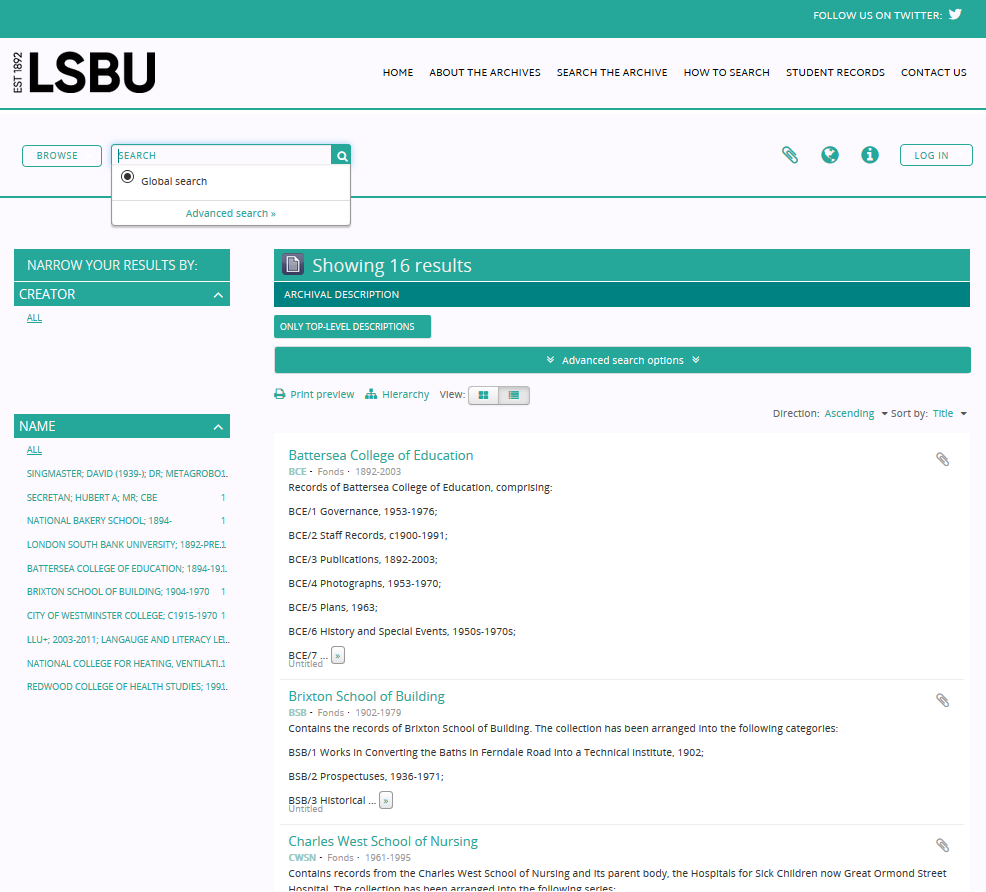
If we select one of the collections – say the Battersea College of Education – we enter a page describing the structure and content of that particular collection. There is a second search bar at the upper left of the page under the label QUICK SEARCH. This search box only searches the current collection.
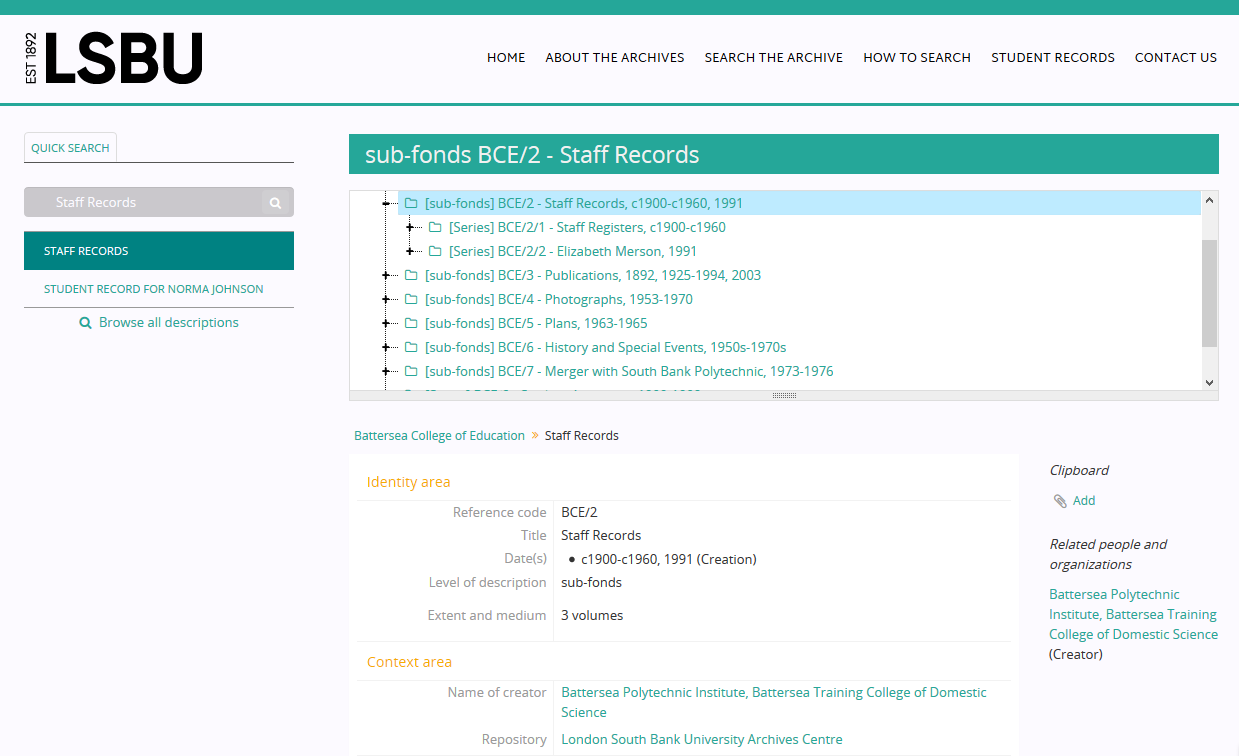
Advanced search can be selected from the bottom of any of the Global search bars.

The Advanced search page presents a user with a number of options for building very specific searches.
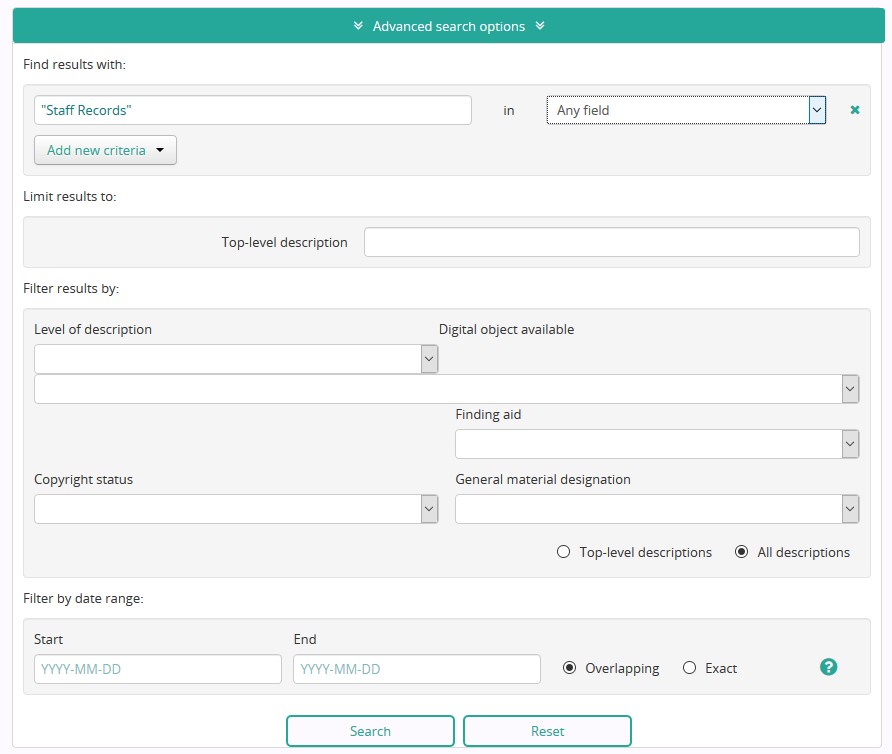
At the top is the usual search bar where we type the search string. However to the right of the search bar there is a pulldown menu for selecting which field to search in.
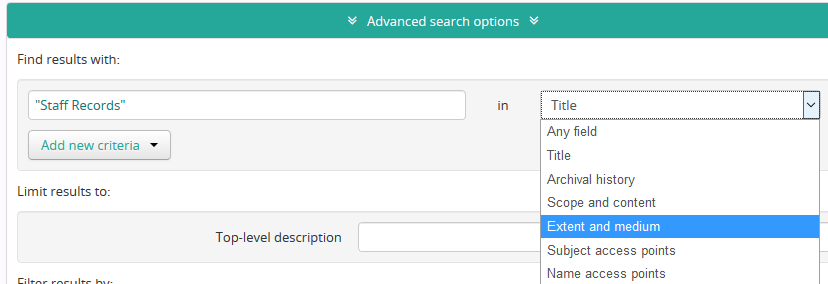
The Add new criterion pulldown under the search bar allows you to build complex searches with the Boolean operators AND, OR and NOT.

For example, the following query means – “Find all archival description that have “Staff Record” or “Student Record” in the Title but do not have LSBU in the Reference code” (i.e. they are not from the London South Bank University collection).

In the next section down we can limit results to a particular Top-level description (Fond/Collection).

Continuing down the page, we can filter our results by various criterion. In this example I have specified that the results must contain a Digital Object (Image, Sound, Movie etc.), that the item must be in the Public domain, and that I’m only interested in Architectural drawings.
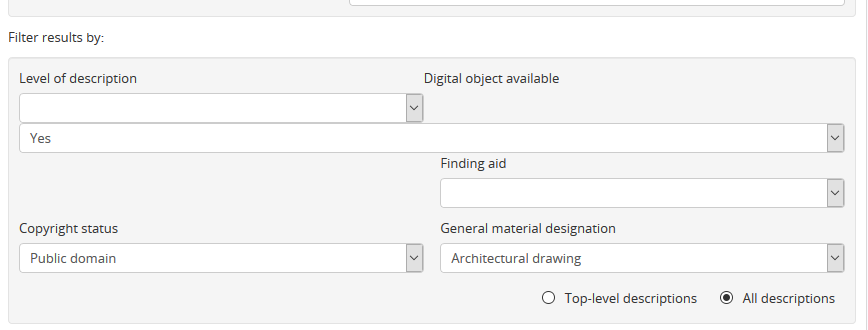
Finally at the bottom of the Advanced search page, we can limit our results to a date range. Dates should be written in the format YYYY-MM-DD. I have selected a date range the 1st August 2015 to the the 5th of May 2020.

All archive searching starts by selecting SEARCH THE ARCHIVE from the Home page.

This takes you to the landing page of the LSBU Archive Catalogue.

There is a search bar toward the upper left of the screen. Doing a search from here will perform a Global search, meaning that all the collections in the catalogue will be searched. Below the search bar Advanced search can be selected – this is explained later.
Let us say we wish to search for Staff Records.

Search terms entered into the search box are, by default, searched with an AND operator – this means that the search will return all items in the catalogue that contain the text Staff AND Records. The two words need not necessarily be next to one another, they might be on separate lines or in different paragraphs in the item and the item would still be returned in the search results.
If you want to limit the result to items that just have the words Staff and Records next to each other then you must surround your search string with inverted commas thus:

We can now use the Browse button to the left of the search bar to browse to the Archival Descriptions page.

On the Archival Descriptions page, the top-level Archival descriptions are listed. There is another search bar to the top left of the screen. Searching from here is identical to searching from the landing page of the Archive Catalogue – you will perform a Global search of all the collections.

If we select one of the collections – say the Battersea College of Education – we enter a page describing the structure and content of that particular collection. There is a second search bar at the upper left of the page under the label QUICK SEARCH. This search box only searches the current collection.

Advanced search can be selected from the bottom of any of the Global search bars.

The Advanced search page presents a user with a number of options for building very specific searches.

At the top is the usual search bar where we type the search string. However to the right of the search bar there is a pulldown menu for selecting which field to search in.

The Add new criterion pulldown under the search bar allows you to build complex searches with the Boolean operators AND, OR and NOT.

For example, the following query means – “Find all archival description that have “Staff Record” or “Student Record” in the Title but do not have LSBU in the Reference code” (i.e. they are not from the London South Bank University collection).

In the next section down we can limit results to a particular Top-level description (Fond/Collection).

Continuing down the page, we can filter our results by various criterion. In this example I have specified that the results must contain a Digital Object (Image, Sound, Movie etc.), that the item must be in the Public domain, and that I’m only interested in Architectural drawings.

Finally at the bottom of the Advanced search page, we can limit our results to a date range. Dates should be written in the format YYYY-MM-DD. I have selected a date range the 1st August 2015 to the the 5th of May 2020.
